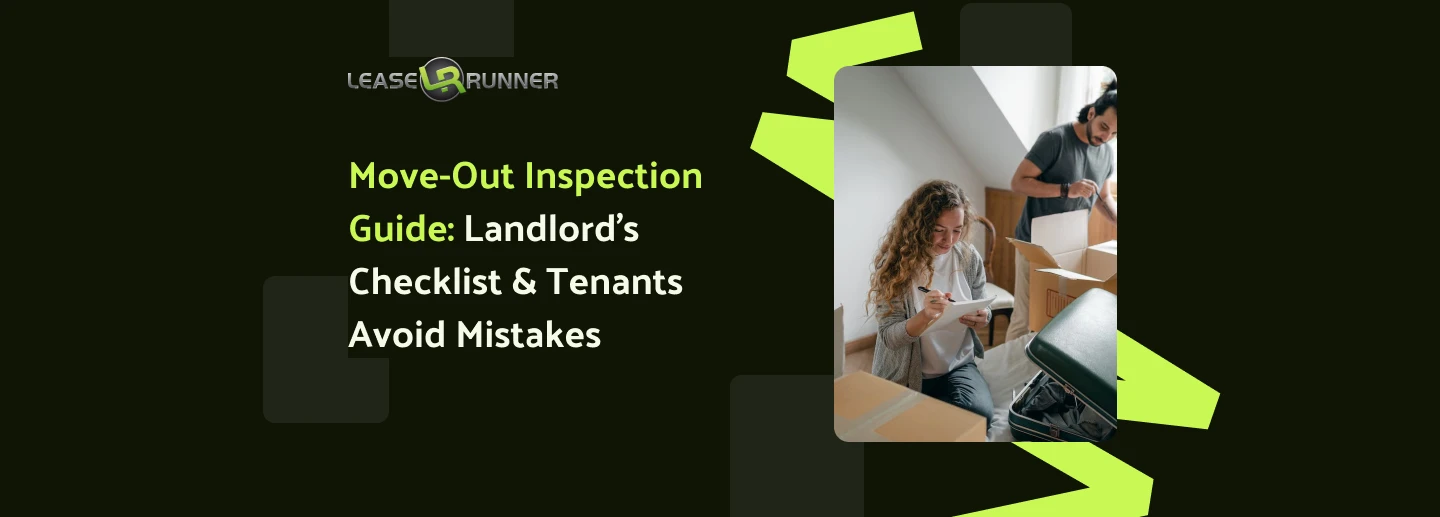Tenant vs occupant is more than a title; it determines who has legal rights and who doesn’t. Tenant signs the lease, pays rent monthly, and when something goes wrong, can mandate repairs from the landlord. If a pipe bursts, the tenant has a legal right to ask for repairs.
An occupant, on the other hand, could be living in the unit and not have signed anything at all. Someone who moves in as a partner, or a child living with the parent, is a non-leasing occupant.
The distinction between occupant and tenant is important; tenants have legal protections while occupants do not. Understanding what an occupant is on a lease and what your rights are as an occupant has assisted both renters and landlords in their disputes and protects them.

What Is a Tenant?
A tenant is someone who has a legal agreement to live in a rental property, typically through a signed lease or rental contract. This person is officially recognised by the landlord and assumes both rights and responsibilities under the law.
Tenants are responsible for paying rent, following lease terms, and maintaining the property to a reasonable standard.
Key responsibilities of a tenant include:
- Pay rent on time: Tenants must send full payment by the due date outlined in the lease. For example, failing to pay rent on the first of the month can lead to late fees or even eviction proceedings.
- Maintain the property: Tenants are expected to keep the unit reasonably clean, report repairs promptly, and avoid reckless damage. A tenant, for instance, must notify the landlord if the plumbing is leaking rather than ignoring it.
- Comply with lease terms: Lease rules may include limits on subletting, pet restrictions, or noise policies. If a tenant breaks these terms, the landlord has grounds to take legal action.
Tenants are also the primary point of contact for the landlord. They’re the ones who can be held legally accountable for any lease violations, late rent, or property damage.
Not sure how a lease differs from rent? Learn the difference between lease and rent here to better understand your obligations.
What Is an Occupant?
On the other hand, an occupant is someone who lives in a rental property but doesn’t have a direct legal relationship with the landlord. Occupants can include family members, roommates added informally, or even caregivers or long-term guests.
While they may live in the space day-to-day, occupants don’t hold the same rights as tenants under landlord-tenant laws. Their ability to stay in the property usually depends on the lease-holding tenant’s terms and the landlord’s consent.
What’s the Legal Difference Between an Occupant And a Tenant?
The key difference between a tenant and vs. occupant lies in the legal relationship and responsibilities tied to the rental property. A tenant signs the lease, pays rent, and gains full landlord-tenant rights, while an occupant lives in the property without those same obligations or protections.
Lease Agreements and Legal Standing
A tenant is a recognised party in the rental contract. When the lease is signed, the tenant accepts obligations such as paying rent on time, maintaining the unit, and complying with property rules.
This legal tie gives tenants enforceable rights. For example, if a tenant faces sudden lockouts, they can assert their right to “quiet enjoyment” in court.
In contrast, an occupant is simply someone living in the unit, such as a family member, roommate, or partner. If they did not sign the lease, they do not have an independent legal bond with the landlord.
This explains why landlords often ask renters to list non-leasing occupants in applications. It ensures transparency but does not grant legal status.
Rent Payment Responsibilities
Tenants are obligated to pay rent, and if a tenant does not pay their rent, or pays their rent late, or causes damage to the premises, as the landlord, you can sue them for rent owed or damages to the premises. For example, if two people rent the unit, they are both jointly and severally liable.
In contrast, an occupant is under no obligation to pay the landlord rent. A roommate might give the tenant money casually, but the landlord cannot compel the occupant to pay rent.
This difference helps explain the difference in obligation an occupant has versus a tenant; one is a contract, one is not.
As a tip, if a roommate moves in and you do not add them to the lease, you won't be able to collect rent from them. Make sure that when you have a long-term roommate, to amend your lease!
Repairs and Maintenance Requests
Tenants have the right to submit repairs, habitability issues, or maintenance requests. In California, for example, tenants can even withhold rent if major repairs like plumbing or heating go unfixed.
Occupants, however, cannot demand such repairs directly. A landlord is only obligated to respond to the tenant on the lease. If an occupant calls, the landlord may legally ignore the request unless authorised by the tenant. This illustrates again what an occupant on a lease truly means: no contract, no rights.
For instance, if you live with an occupant, put in writing that all work order requests must come from the tenant to avoid disputes.
Rights and Limitations
Tenants have clear legal rights because of landlord-tenant laws. These laws give them protection, such as notice before entry, the right to a formal eviction process, and the power to dispute unfair lease terms. For example, if a tenant misses rent, the landlord must file an eviction case in court.
The tenant then has a chance to explain or settle before removal. These steps exist because the tenant has a signed rental agreement. Occupants do not have the same type of protection. They do not sign an agreement with the landlord. Instead, they are seen as guests of the tenant.
This gives them some limited rights, such as the right to stay in the property while allowed by the tenant and a basic right to privacy inside the unit.
However, these rights end once the tenant asks them to leave or when the tenant’s lease ends. Unlike a tenant, an occupant cannot demand housing or stop a landlord from requiring them to leave. An occupant’s stay depends on the tenant’s permission.
If the tenant ends the arrangement, the occupant must move. Also, landlords are not required to give an eviction notice for an occupant like they would for a tenant. This is why many landlords worry about hidden occupants. If the lines blur and an occupant claims to be a tenant, it can delay removal and create disputes.

Property management sometimes leads landlords into grey areas where the delineation of occupant and tenant is not always clear. Typically, these instances involve family members who rent together, co-applicants, or short-term renters. Let's look at how each situation works in practice.
Family Members or Partners as Occupants
Often, we have tenants who will have their partner, spouse, or children move in as a family. In most cases, we treat these family members as occupants since they do not have a signed lease with the landlord.
For example, if a tenant signs a lease at the property and their partner later moves in and is not listed as an occupant, they have no claim as a tenant, and the law would consider that partner a non-leasing occupant.
In practical terms, it means that they do not have a contract with the landlord, and have no rights in law to stay in the unit once the tenant vacates the property.
However, if this partner name is then included on the lease with the landlord, then they become a tenant and with all the responsibilities and legal protections a tenant has. In this case, the tenant vs occupant on lease dichotomy can be flexible.
Co-Applicants vs. Occupants
A co-applicant is an individual who applies to be a tenant, runs through a credit check, and signs the lease. They are tenants. An occupant on a lease, on the other hand, could just be there for the background or for emergency contact purposes.
Because an occupant does not sign, he remains an occupant, not a leasing occupant. This is an important distinction for landlords to clarify in order to minimise the potential for confusion over who is responsible for rent or damages.
Occupants in Co-Living or Short-Term Rentals
In co-living situations, or short-term rentals, such as Airbnb, occupants may regularly move in and out of spaces without completing an application or lease. These individuals are not tenants.
For example, a guest residing in a room for two months via a co-living platform does not have ongoing legal rights when that contract ends. If the guest refuses to leave, the court would likely side with the landlord, due to the tenant never having signed a lease.
This addresses the very common inquiry, what are my rights as an occupant? The answer is usually limited unless the lease provides them with tenant status.
Legal and Practical Implications
The legal difference between a tenant and an occupant has direct effects on landlords. A tenant has rights under landlord-tenant laws, so eviction requires a court order.
An occupant may be removed without the same process. Mistaking the two can cause disputes over eviction timelines, security deposits, or insurance claims, leaving landlords at legal or financial risk. Scroll down to check more details information right below!
Eviction: Tenant vs. Occupant
A tenant is protected by lease laws. To remove them, landlords must give proper notice and follow the court eviction process. For example, if a tenant refuses to pay rent, the landlord cannot lock them out.
The case must go to court. An occupant, however, has limited rights. If someone is simply living in a unit without signing, courts often see them as a non-leasing occupant. In that case, removal may happen without a formal eviction.
But there are exceptions: if the person has made rent payments directly to the landlord, a judge could decide they acted like a tenant. This shows why the tenant vs occupant on lease issue is so important.
Insurance Considerations
Most policies of landlord and renter insurance are limited to named tenants. Depending on the lease wording, unnamed, unknown occupants may not have any coverage.
For example, if your roommate, who is not named on the lease, accidentally starts a fire, causing damage, the insurance company can deny that claim.
This is why landlords should ask tenants to disclose and identify who is an occupant on a lease. Besides, remember to keep written documentation on who resides in the dwelling.
This protects both parties as occupants finally learn about the insurance companies' view on landlords' commitments and restrictions.
Security Deposit Rules
Only tenants have the right to access a security deposit. A non-leasing occupant could not get their money back on a deposit, even when they contributed to paying rent informally on the side.
For example, when two roommates are paying rent and only one signed for the unit, the refund for the security deposit goes only to the named tenant.
Risks of Misidentifying Tenants and Occupants
Confusion between tenant and occupant can lead to costly and stressful problems ranging from financial issues to legal issues to a breakdown of the rental relationship.
These problems can arise because landlords may mistakenly assume occupants have the same legal responsibilities as tenants, which is not true. Here are several risks you should refer to:
Financial Risks (Unpaid Rent, Damages)
When landlords are confused about the difference between a tenant and an occupant, rent collection becomes messy.
In the case of an occupant who is not a named tenant, all rent collection efforts will be futile, because a landlord cannot pursue a lawsuit against someone who is not their tenant; listed tenants bear the legal responsibility.
For example, a tenant has a friend who needs to stay in the unit. The friend damages the unit, and the landlord wants to charge the friend for apartment damages. The landlord cannot charge the occupant directly for the damages.
Instead, the landlord must charge the listed tenant, not the friend. For this reason, it is beneficial for landlords to specify the number of occupants on the lease and make expectations clear!
Legal Risks (Wrongful Eviction, Lease Violations)
The eviction laws are clear: there is a legal distinction. A tenant (true tenant) must be removed by the court, while many occupants can just be asked to leave without a court recent - so many, but not all.
Problems arise, however, when an occupant looks and behaves like a tenant. For instance, if an occupant pays rent directly to the landlord, a judge may find they gain tenant status. Misunderstanding the line between tenant vs occupant can escalate into complete chaos.
Impact on Landlord-Tenant Relationship
The human side of the rental agreement matters just as much. If extra people are living in a unit without approval, landlords may lose trust and even refuse future renewals.
Clear disclosure about household members helps preserve trust, keeps leases enforceable, and avoids disputes.
When Does an Occupant Become a Tenant?
An occupant becomes a tenant when they enter into a formal rental agreement, either by signing the original lease or by being officially added to it later through a lease addendum or amendment approved by the landlord.
It’s worth noting that long-term or permanent occupants can sometimes blur this line. In some jurisdictions, someone who has lived in a rental for an extended period may gain certain legal protections, even without a signed lease. That’s why clear communication and documentation are important for both landlords and tenants.
Tenant vs occupant rights
Transitioning from Occupant to Tenant: Step-by-Step Guide for Landlords
When managing rentals, landlords often face the issue of moving someone from occupant status to full tenant status. The distinction matters because tenant vs occupant rights differ greatly.
Tenants hold enforceable protections, while an occupant, for example, a roommate or partner who moves in without signing, has no direct agreement with the landlord. By following a clear process, landlords safeguard the lease relationship and minimise disputes.
Step 1: Communicate With Tenant
Start with an open and direct conversation. Ask the original tenant about any additional people living in the unit and confirm whether they plan to stay long term.
For instance, if a tenant’s partner has been living there for six months, discuss whether the partner should transition from being a non-leasing occupant to a legal tenant. Early communication prevents hidden occupants and builds trust.
Step 2: Conduct Thorough Screening Process
Before adding someone to the lease, landlords should screen them the same way they would a new applicant. Perform a background check, verify employment, and check rental history. Screening ensures that all household members meet requirements and guarantees consistency.
Step 3: Consider Lease Option
At this stage, landlords should decide whether to create a lease modification or wait until lease renewal to formally add the occupant. For example, if the current lease has six months left, the landlord may prepare an addendum to include the occupant now.
At renewal, both tenants can sign a fresh contract, establishing updated terms and accountability. This also answers a frequent question: Does an occupant have to sign the lease? The answer is yes, if they are to become a tenant with full legal responsibility.
A clear lease document eliminates confusion and enforces tenant vs occupant rights fairly. A pro tip for you is to use this stage to review other terms, such as rent increases, maintenance expectations, or guest policies. A renewal provides the perfect chance to modernise the rental agreement.
Step 4: Document Clearly Throughout Process
Keep written records of all communications and agreements. Draft any lease modification or renewal in writing and provide copies to all parties. Written proof ensures compliance and avoids “he said, she said” arguments later.
Step 5: Legal Consideration
Finally, landlords should review state and local housing laws before finalising agreements. Rules often vary on what a non-leasing occupant is, guest limits, and notice requirements.
Consulting an attorney or checking resources like a lease renewal legal guide helps align practice with regulations. Clear legal adherence avoids problems such as wrongful eviction claims or unenforceable contracts.
By following these steps, landlords can effectively manage the transition from occupant to tenant, ensuring a clear, legal, and beneficial arrangement for all parties.
Final Thoughts
The tenant vs occupant difference may seem small, but it’s key. Tenants sign the lease and have full legal rights, while occupants are more like guests without any formal standing. Keeping this in mind helps prevent misunderstandings and makes the rental process smoother!
Want to dive deeper into rental tips and insights? Check out more on the LeaseRunner blog and stay informed.
FAQs
Q1. What is a non-leasing occupant?
A non-leasing occupant is someone who lives in a rental property but has not signed the lease agreement. They are allowed to reside in the unit, typically with the tenant’s permission, but they don’t share the legal responsibilities or protections that come with being a tenant. Essentially, they are occupants without a formal contract with the landlord.
Q2. What are my rights as an occupant?
As an occupant, your legal rights are limited compared to tenants. For instance:
- You may have the right to basic habitability (i.e., a safe and livable space).
- You could have some eviction protections if you've lived in the property for a long time, though it’s usually easier for a landlord to remove an occupant than a tenant.
- Occupants may be entitled to notice before eviction if the tenant moves out, depending on the local jurisdiction.
Q3. Does an occupant have to sign the lease?
No, an occupant does not have to sign the lease. The lease agreement is between the landlord and the tenant, who is legally responsible for the terms, including rent payments and property upkeep.
Occupants live in the unit but are not bound by the lease in the same way. However, some landlords might request that all individuals residing in the property be added to the lease for transparency or legal reasons, even if they are not financially responsible.
Q4. Can a landlord evict an occupant not on the lease?
Yes, in many cases, a landlord can evict an occupant who is not on the lease, but the process may vary depending on the situation and local laws. If the occupant is living in the unit without landlord approval, the landlord can typically require them to leave.
If the occupant is there with the tenant’s permission, but not listed on the lease, the landlord may still have grounds to ask them to leave, especially when the tenant vacates, or if the occupant violates house rules or creates a legal concern.
However, even though the occupant isn’t on the lease, landlords often still need to follow legal notice procedures to remove them.







